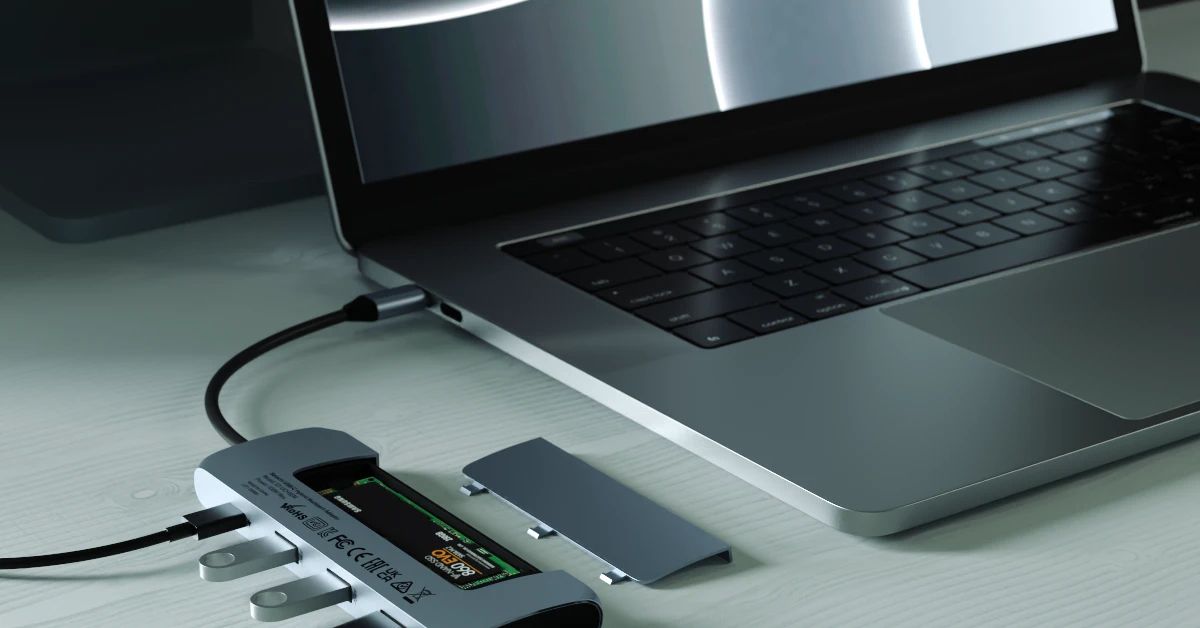Noted hub-maker Satechi has come out with a new dongle that combines extra ports and a slot for an M.2 SATA SSD for expanding both your computer’s IO and storage while only taking up one of your precious ports. It doesn’t come with an SSD, but it does have a catchy name: the Satechi USB-C Hybrid Multiport Adapter. The concept has been done before by lesser-known brands, but if you’re considering it now that Satechi is making one, maybe hold off for just a moment while we break down the caveats and the potentially better options.
As a hub, it’s pretty standard and unobjectionable: it has 100W USB-C PD passthrough (that will supply your computer with around 85W after it takes the energy it needs to operate), two USB-A 3.0 ports, and an HDMI port capable of driving a 4K screen at 60Hz. Then, of course, there’s the M.2 port for adding a SATA SSD of almost any size.
The main issue with Satechi’s new hub is the value proposition: at $90, it’s an expensive hub (though I’ve found Satechi’s aluminum designs to be very nice, if that’s the sort of thing you like to spend money on). But even at that price, it doesn’t come with an M.2 SSD. Unless you’ve got one of those floating around, you’re going to have to shell out even more money to make use of this hub’s defining feature.
For just $10 more, you can get Anker’s PowerExpand, which includes USB-A ports, an HDMI port, a USB-C PD passthrough, and 256GB of built-in storage. Sure, you don’t get the option to put a bigger SSD in, but it’s significantly cheaper than Satechi’s option once you factor in the added cost of buying a separate M.2 SSD. You could also just buy one of Satechi’s other hubs (which adds SD and microSD card slots) and a 256GB flash drive, and you’d be pretty close to the price of the USB-C Hybrid Multiport Adapter alone.
Of course, a flash drive will be much slower than an SSD — at least, it would be under ordinary circumstances. That’s the second big caveat of Satechi’s new hub, though: you’re only able to access the SSD at USB 3.0 speeds, meaning 5 Gbps. That’s going to severely limit the performance of even the SATA SSDs that the hub supports. (Satechi’s site says that you can’t use NVMe drives.) If you need a fast external SSD, you should probably just go with a dedicated external SSD — and if you don’t, you should probably just get a cheaper flash drive.
It seems like this product would be hard to recommend unless you’ve got absolutely no ports — perhaps if you own that MacBook that rocked only a single USB-C port (or, more realistically, an iPad Pro or Air), and you need to expand your storage, this is for you. It could also be useful if you’re an IT tech who spends all day popping drives out of laptops, and you want to have an all-in-one solution for reading those and plugging things in. For everyone else, though, it’s a hard product to recommend. Hopefully, some of our other suggestions will suit you well.
For all the latest Technology News Click Here
For the latest news and updates, follow us on Google News.

